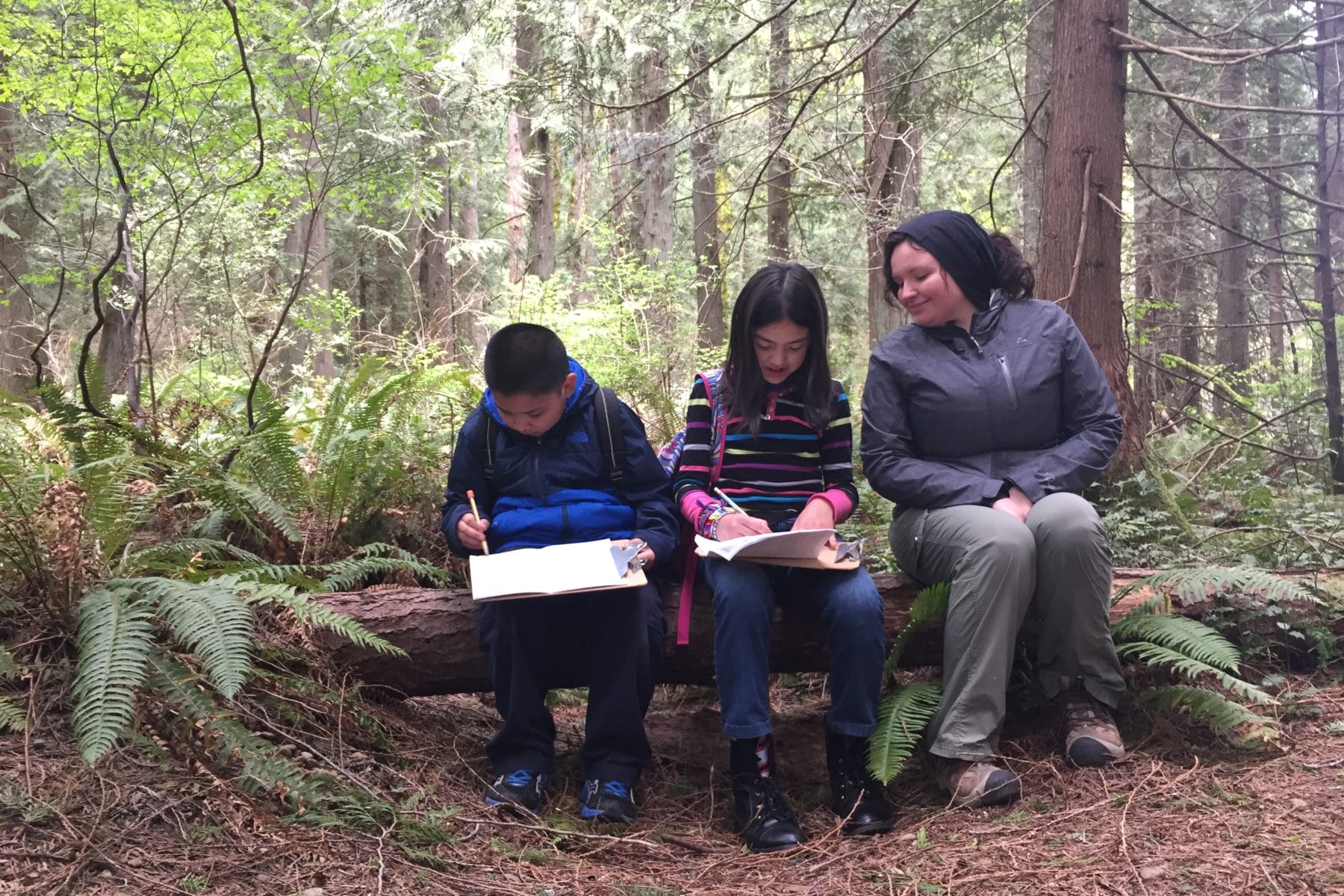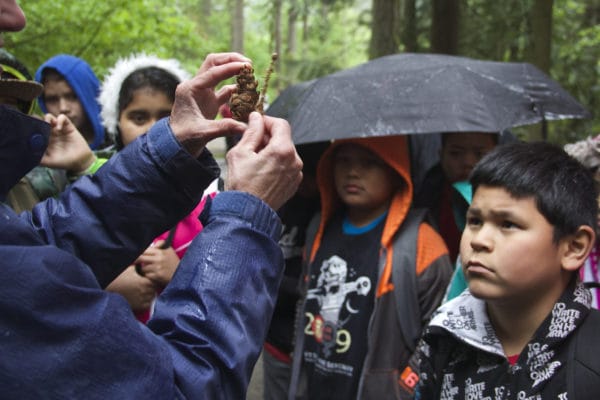This FAQ (Frequently Asked Questions) page is divided into the following categories to help you find your answer faster. Don’t see the answer to your question? Visit the main Education Program page or contact our Education Program Manager, Becca Kedenburg.
 Waivers
Waivers- Chaperones
- Transportation
- What to Bring/Wear
- Program Cost
- Classroom Lessons
- Curricula
- Science Journals
- Stewardship Events
Waivers
Who is required to bring a signed waiver?
All participants. One signed waiver covers a youth for their field trip and stewardship event. Adults sign a separate waiver at each event.
Where can I find printable waivers online?
Find waivers at: mtsgreenway.org/get-involved/education/waivers. They are available in English, Spanish, Vietnamese, Chinese, and Russian. Greenway Educators will have blank waivers available for adult participants only.
Do adults need to sign a waiver?
Yes. All adults, including teachers, must sign a waiver for the field trip and stewardship event.
Chaperones
How many chaperones do I need to recruit for the field trip?
We ask that teachers bring at least 3 adult chaperones per class, in addition to the teacher.
What are chaperones expected to do?
Chaperones play an important role! They help us manage student behavior (especially when using tools like shovels and loppers), guide small groups of students in field investigations, and keep students engaged in the activities. Greenway Educators explain their role in more detail at the beginning of the field trip. We encourage chaperones to preview the Chaperone Packet ahead of time.
Transportation
What are my transportation options?
The school must provide transportation to the field trip and stewardship event. Some schools are eligible for transportation assistance.
If at least 35% of a school’s student population is from low-income families, the Greenway Trust can cover the cost of bus transportation. They can (1) submit their receipt for reimbursement or (2) submit their invoice and the Greenway Trust will pay it directly. Contact us for more information.
Is my school eligible to use a free Wheels to Water bus?
Schools with a free or reduced lunch rate of at least 35% are eligible to use a free Wheels to Water bus, provided by King County. Click here to read about Metro’s safety protocols. There are limited buses, so contact the Education Program Manager promptly if you are interested in using one. Schools with a free or reduced lunch rate of at least 50% are eligible to have their school bus(es) paid for by the Greenway Trust.
I was approved to use a Wheels to Water bus. Where do I register?
After you’re approved, you’ll register for your Wheels to Water bus(es) at least three weeks before your field trip date here: kingcounty.gov/services/environment/wastewater/education/wheels-to-water.aspx.
How many people fit on a Wheels to Water bus?
There are two bus sizes: one carries 40 passengers and one carries 70 passengers. Contact the Education Program Manager for more details.
I registered for my Wheels to Water bus. What happens next?
The King County Wheels to Water coordinator will send you a confirmation email approx. one week before your field trip with an attached transit report, which you will hand off to the bus driver.
What to Bring/Wear
What do my students need to bring/wear on their field trip?
- Backpack
- Lunch
- Full water bottle (sites have limited or no access to drinking water)
- Comfortable, closed-toe shoes that they don’t mind getting muddy
- Long pants are required at stewardship events
- Rain gear and/or warm clothing (jacket, hat, gloves)
- Greenway science journal
Program Cost
How much does your program cost?
Our program fees are per class and are based on a school’s percentage of students from low-income families, which can be found here.
Where can I find my school’s low-income percentage?
OSPI’s Washington State Report Card: washingtonstatereportcard.ospi.k12.wa.us.
Classroom Lessons
How long are the classroom lessons?
The classroom and reflective lessons are approximately an hour each.
How should I prepare for classroom lessons?
Be sure to teach the introductory lesson for your curriculum before a Greenway Educator visits your school. Please have your students complete the pre-program assessment. The Greenway Educator will need to use your computer and projector to show a presentation, which they will bring on a USB drive.
What do my students need for the classroom lessons?
Your students will need their Greenway science journal and a pencil.
Curricula
What curricula do you offer?
We have two curriculums: Forests and Fins and Next Generation Stewards. Learn about them here.
Which curriculum is best for _____ grade level?
Grades 4-5: Next Generation Stewards
Grades 5-8: Forests and Fins
What do you offer for high school students?
The Greenway Trust hosts three paid summer internships for high school students, and has a running list of dozens more offered in the region. Learn about them all at mtsgreenway.org/internships.
Science Journals
What are Greenway science journals?
We created a science journal to accompany each of our curricula so that students have a place to record their observations, data, conclusions, and reflections. Students use them in the classroom and in the field. See them all here.
When do I get the science journals for my students?
We will mail or drop off science journals to your school about a month before your classroom lesson.
Stewardship Events
What is a stewardship event?
Students have an opportunity to build on what they learn in the classroom and on field trip by doing ecological restoration. They use basic hand tools (shovels, rakes, loppers) to improve habitat for salmon and other important wildlife species.
What do students do at a stewardship event?
We typically plant native trees and shrubs in the fall/winter and remove weeds (e.g. blackberry, ivy) in the spring/summer.
Can we do your program without doing a stewardship event?
Yes and we strongly encourage including the stewardship event. If program or transportation costs are a limiting factor, contact the Education Program Manager.
Can we just do a volunteer restoration event without doing the rest of the education program?
Yes! Please contact the Volunteer Program Coordinator.



